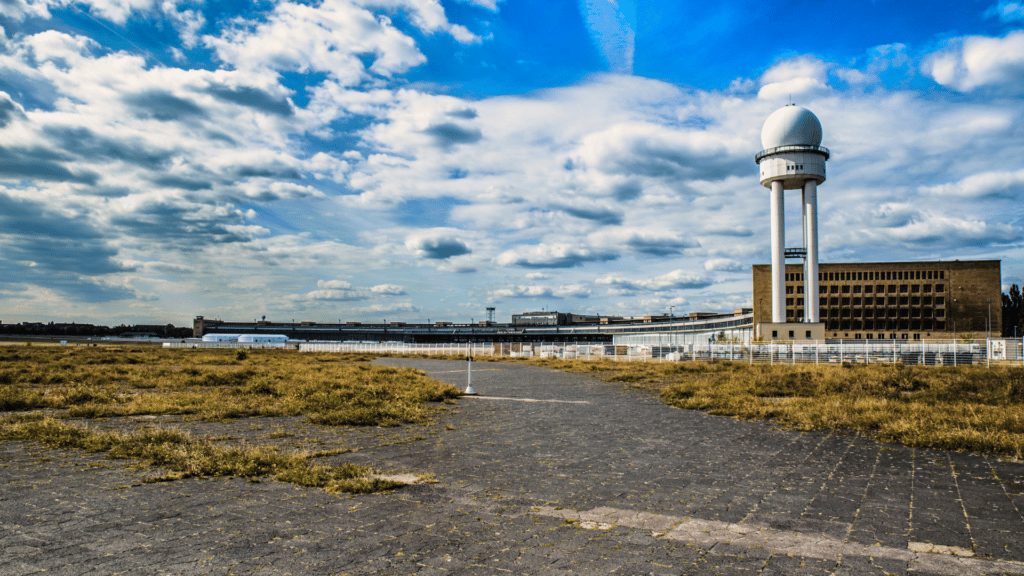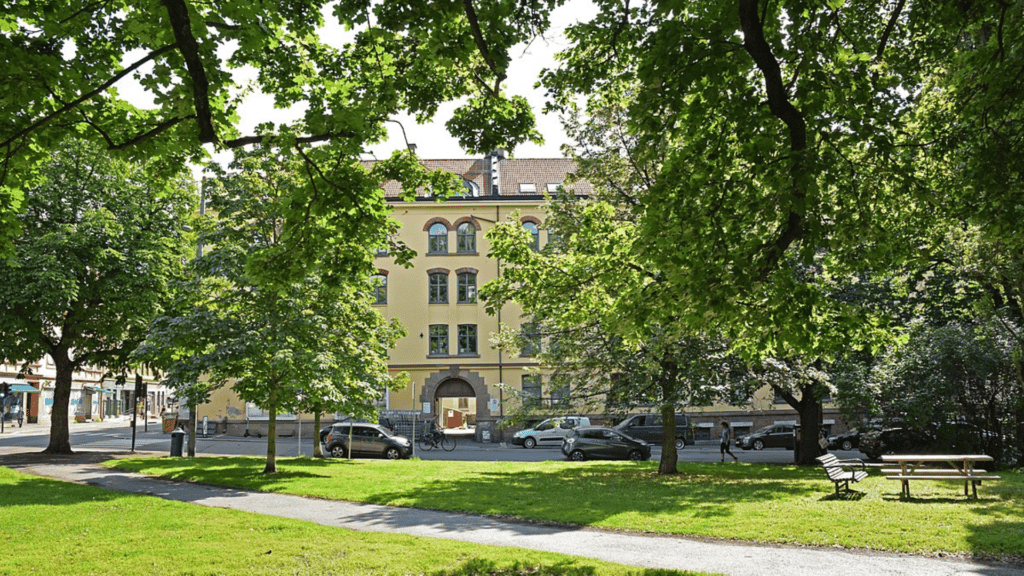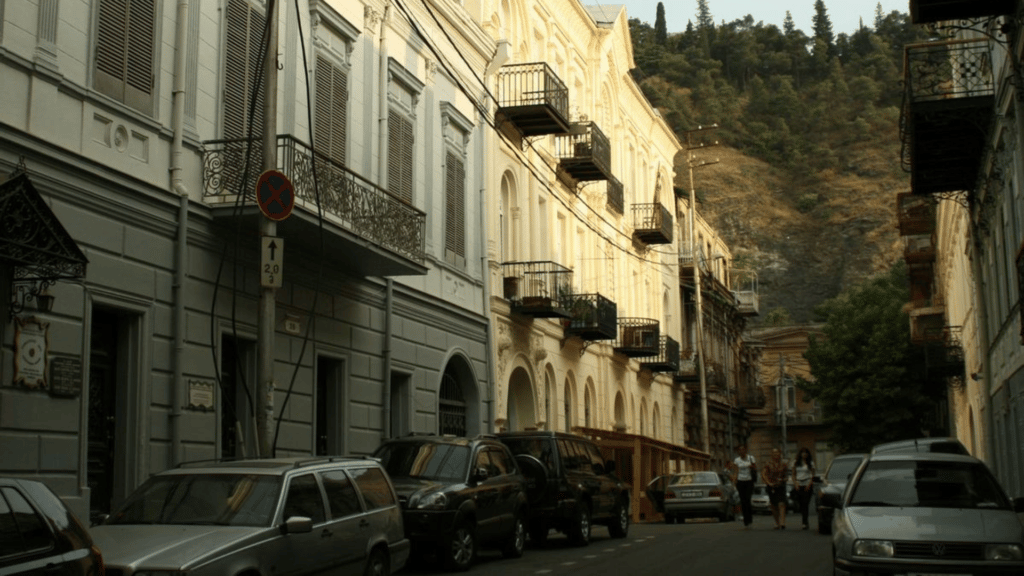Good news for those looking to satisfy their travel appetite at the end of summer. Time Out, a global media platform, asked 27,000 travellers about their favourite neighbourhoods to visit on holiday. The extensive list features 49 places from around the world, and Europe takes the top spot with 21 mentions. EHT dove into the list and selected 10 neighbourhoods with remarkable cultural heritage. Ready to plan your next city trip?
Nørrebro, Copenhagen | Denmark
“However you define ‘cool’, Nørrebro has it”, Time Out writes, as they crowned Nørrebro as the coolest neighbourhood in the world. This diverse district, on the northern side of Copenhagen’s lakes, is a blend of historic landmarks, ultramodern architecture and food and drink joints. It even features a piece of Danish and European heritage as well: you can visit the graves of famous Danish writers such as Hans Christian Andersen and Søren Kierkegaard at Assistens Kirkegård cemetery.

Leith, Edinburg | Scotland
Coming in at number 4 is Leith. The north Edinburgh district had a strong connection to industry stretches for centuries, as it once was Scotland’s main port. While the smoky factories and bustling shipyards have been replaced with restaurants and shops, Leith does pay homage to its past. Visit the former floating home of the British royal family – the yacht Britannia – in the harbour, dive into Leith’s famous maritime history at Trinity House or grab a bite to eat at former industrial yard The Pitt.

Station District, Vilnius | Lithuania
A surprising fifth place for the Station District of Vilnius, where travellers recommend to go looking for the best street art one can find in the capital of Lithuania: murals, giant Tony Sopranos and sculptures jammed onto neoclassical buildings. A touch of the Soviet past can be seen in the Loftas Art Factory, a community-oriented venue hosting gigs, fashion shows and screenings. The neighbourhood is a gem for brutalism enthusiasts, although plans about redesigning certain areas are taking more and more shape.

Neukölln, Berlin | Germany
No neighbourhood better captures the dynamism of modern Berlin better than Neukölln, Time Out’s number 11 on the list. Plenty of small grocery stores and cafés run by immigrant families who have long called Neukölln home survive to this day. And with even a UNESCO World Heritage-listed building – the Britz large housing estate or horseshoe estate – the area has a modernist icon of architecture. And don’t forget to visit the lovely Tempelhof park, the former airport that now lies in the middle of the busy neighbourhood.

Dublin 8, Dublin | Ireland
Not really a neighbourhood, but a historic postal code area occupies 15th spot: Dublin 8, or D8. The area stretches over two sides of the river Liffey, which runs through the Irish capital. Enthusiasts of religious landmarks can visit St. Patricks Cathedral and Christ Church Cathedral, while Pearse Lyons Distillery is taking tours around its church distillery again. Working class history can be found in the Liberties suburb, while the Islandbridge from 1577 (rebuild in 1791) leads you to the impressive Irish National War Memorial Gardens.

Sagene, Oslo | Norway
Up north, in the Norwegian capital Oslo, Time Out handed the borough of Sagene 21st place. With plenty of historic buildings, parks and the astonishing Sagene Church, it feels like a city inside a city. Being called the cradle of industrialism in Norway, Sagene also has the oldest industrial building in the country: the Glads Mølle papermill. The river Akerselva, which runs right through the borough, was long used as an energy source for mills and turbines. Now that the industry has gone, residents spend their time in one of the many shops or cafés in the district.

Kemptown, Brighton | England
Everyone who’s ever been to the south of England is familiar with the iconic Brighton Palace Pier, a listed monument. No wonder entry 26 on Time Out’s list is the neighbouring community of Kemptown. With plenty of Regency and Victorian architecture to admire, the quarter is famous for its legacy as a place where many artists and actors lived. It has a sizeable LGBT community and a network of streets with specialised shops, hotels, cafés and pubs, such as the crypt of St George’s Church.

Sololaki, Tbilisi | Georgia
Next in line is Sololaki, a historic neighbourhood in the heart of the Georgian capital of Tbilisi. The area’s art-nouveau buildings once housed Georgia’s finest thinkers, writers and artists of the nineteenth century, but are now home to Tbilisi’s coolest cafés, bars and pop-up restaurants. If you want to almost inhale the history of the city, pay attention to the entrance halls and yards. There you might find old paintings, marble stairways and other faint memories from Soviet times. Watching over it all is Kartlis Deda (the Mother of Kartli, the region in which Tbilisi lies), a monumental statue of a woman on Sololaki’s ridge.

Foz do Douro, Porto | Portugal
Sneaking into the top 40 at number 38, is the district of Foz do Douro in the Portuguese city of Porto. Named after the river Douro that meets the ocean at the edge of the area, the most famous landmark surely is the Farol do Molhe, a lighthouse that would be a great fit for any pirate movie. However, Foz features much more built heritage, such as one of Portugal’s earliest examples of Renaissance architecture: the chapel of Saint Miguel-o-Anjo, which is also a lighthouse and fiscal guard building.

Kadıköy, Istanbul | Turkey
And EHT’s final pick of the bunch is 45th placed Turkish neighbourhood Kadıköy, in Istanbul. Alright, you caught us: it’s located on the Eastern shore of Bosporus and therefore technically not European, but due to its long history and heritage, we feel it deserves a mention. For example, Kadıköy has many houses from the Ottoman and Roman periods which are hidden in its side streets. Some of them have been turned into cafés, pubs and restaurants, particularly serving seafood and the rest of them waiting for restoration.


